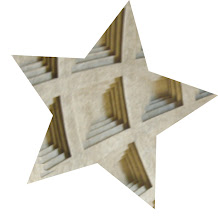Text extracted from the book: The meaning of things, Domestic Symbols and the self.
The home as symbolic environment
Word “home”. The roots of one’s being, the security of a private enclave where one can be free and in control of one’s life.
Emotional space.
Although we live in physical environments , we create cultural environments within them. We continually personalize and humanize the given environment as a way of both adapting to it and creating order and significance.
Home has depends but not only on survival needs (to bring up infants, to eat and sleep in comfort), on the particular economy (hunting or pastoral, farming or industrial).
Home is much more than a shelter; it is a word in which a person can create a material environment that embodies what he or she considers significant. In this sense the home comes the most powerful sign of the self of the inhabitant who dwells within.
Physical dimensions of the home
Description:
1. The physical description identifies the architectural style of the dwelling (typology)
2. The list of the number and function of the subdivisions of space within the building (program)
3. The peculiarities that make the dwelling unique to the respondent (customization)
Style. What does it mean to people? The lack of unified set of cultural goals that imposes itself on the shape of the houses.
It is unlikely that there has ever been a culture in which so many styles of life were represented by the different functional arrangements of the home.
Space seems to be a more crucial factor in the perception of the home for the active young.
The single characteristic of the home most often mentioned was “ comfortable”, “cosy”, “relaxing”.
Physical descriptions people gave of their homes contained the following dimensions: style, size, function, and unique features of the dwelling; its age, how orderly it was, the light there was, above all, whether or not it was comfortable.
A picture of the home means a shelter that allows a person to live distinctly individual life of comfort.
The home as a shell of the self
The mother’s lack of charity about the direction of her own self gets communicated to her son through the house that she threatens to leave and is always transforming. For better or worse, the atmosphere of the home becomes a powerful medium for sharing emotional states within the family and for shaping the selves of those who are exposed to it. Sometimes the negative aura filters into the house from the neighbourhood.
They see a house primarly as a place where people interact with each other; when the home is seen in positive terms, it is because the interaction is harmonious.
The “inner sanctum”
Where in your home do you feel more at home?
Children tended to feel at home in their own bedrooms.
In childhood and adolescence privacy is valued because it enables the child to cultivate a sense of autonomy through interactions with an environment charged with personalized meanings.
With old age, however, the self itself becomes increasingly internalized as the social activities of he old person diminish, and thus the bedroom again becomes important as a private sphere in which the autonomy of the old can be cultivated.
People build homes out of their own essence, shells to shelter their personality.
The home is an empirical and normative entity, constituted through time by the objective patterns of physic activity that people invest in different areas of the house, in different objects, and in different activities.
In order words, the home is a craft cultivated by all it members. When certain artefacts, rooms, and activities are preferentially selected by various family members to embody different patterns of meaning, then different family members can be seen as inhabitating different symbolic environments even though in the same household. So every physical house might contain different “homes”, and the character of these homes might change over time as the goals and patterns of attention that make up the selves of its members change.
The storehouse of signs
Thus the home is not only a material shelter but also a shelter for those things that make life meaningful. Although we have already discussed these meanings. What do all your special objects, taken together as a whole, mean to you?
Therefore the signs of love become the most meaningful objects in the home.
When experts reflect on what the future home will be like, they tend to see a “living environment” in which electronic gadgets replace the slaves of antiquity in catering to every whim of the owner. Such prophecies are very much like this vision by Arthur Pulos.
Unfortunately the only trace of the home’s owners is their shadowy outline against the outside wall, left there by a radioactive explosion.
What matters about the home of the future is not much the numbers of rooms it will have or the amount of electronic marvels it will contain. The important issue concerns the psychic activity of those who live within it. Will the activity be turned against itself and against others or will it be invested in goals that can be cultivated to give a vital sense of shared purpose ad standards for living? We worry too much about trivial technological improvements while leaving the truly essential questions out of reckoning.
The importance of the home derives from the fact that it provides a space for action and the interaction in which one can develop, maintain and change one’s identity. In its privacy, one can cultivate one’s goals without fear of ostracism or ridicule. The home is a shelter for those persons and objects that define the self; thus it becomes, for most people, an indispensable symbolic environment.
Despite a standard of living that is many times higher that any of the past or than that now enjoyed by most people in the worlds, persons in this culture are still confronted by the same fears and frustrations that have threatened the value of life since humans acquired self-consciousness.
How to create and cultivate meaning that is harmony with the ultimate goals of humanity, the living, the dead, the unborn, is the challenge of those who have the welfare of humanity at heart.





















No hay comentarios:
Publicar un comentario